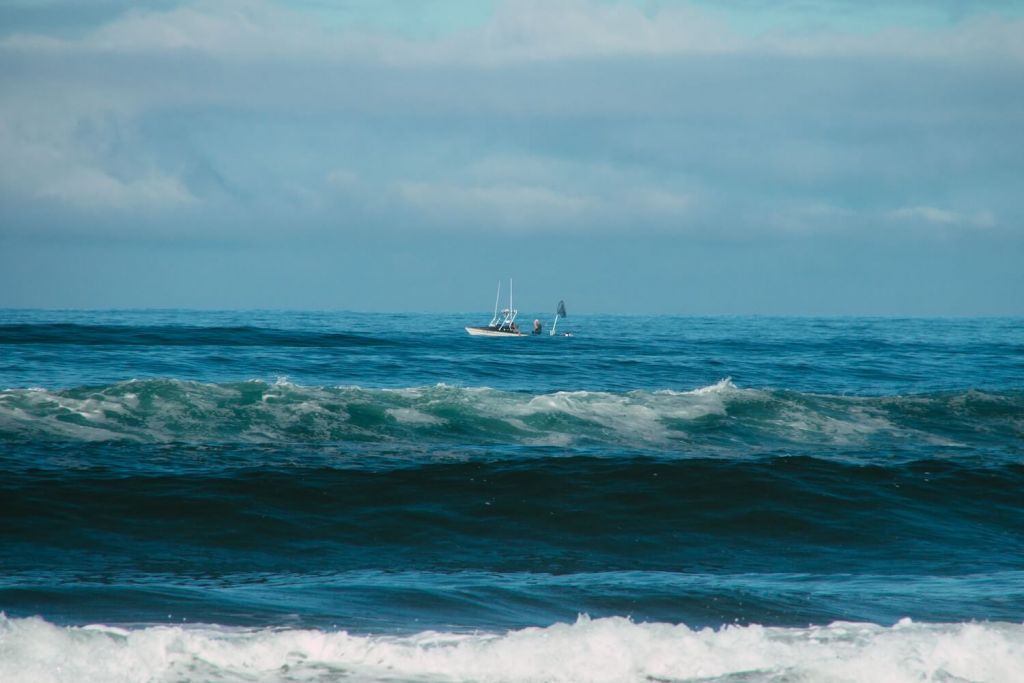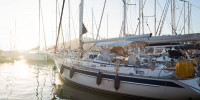Here Are the Most Stable Boat Hull Designs (with Examples)
The most stable boat hull design depends largely on the type of boat, and the conditions it's used in. To make things simple, I've made a neat overview below.
What is the most stable boat hull design? Generally, multihulls and deep-V hulls are considered the most stable hull designs in most situations. In practice, the most stable hull design depends on the specific conditions in which the boat will be used. With large waves, deep hulls tend to be better than multihulls.
With different situations, the most stable hull winner changes. It also differs per type of boat. Sailboat hulls, for example, are a type of displacement hull (which are considered unstable), that, thanks to their keel, are actually very stable.
Below I list the three most stable hull designs with examples to give you a good overview of the different stabilities of each hull design. But let's kick off with a clean overview of the kings and queens of stability for different conditions.
Most Stable Hull Design in Different Situations
| Vessel type | Where and when | Most stable |
|---|---|---|
| Sailboats | Everywhere, all conditions | Multihulls |
| Sailboats | Everywhere, very large waves | Deep Keel Monohull |
| Powerboats | Large bodies of water, waves | Deep-V |
| Powerboats | Small bodies of water, no waves | Flat Bottomed |
If you're unsure whether a particular hull will be stable, here are three rules of thumb to live by:
- The slower it goes, the more stable the hull will be
- The larger the part underwater, the more stable the hull will be
- The broader it is, the more stable it will be

On this page:
Multihulls
The multihull is the absolute winner in this list, so let's start there. Multihulls are incredibly stable, especially if they consist of two separate hulls (most sailboats). It is generally the most stable hull design out there, in most situations. The exception are extreme weather (and especially wave) conditions. With very large waves, I'd say a prefer a very deep keel design over a multihull.
So why is the multihull on sailboat the most stable, but not on powerboats in the overview above? Well, sailboats and powerboats have different hull types. They move through the water differently, which really impacts the stability of the multihull design. Sailboats have displacement hulls, but powerboats typically use planing hulls. Planing hulls glide over the water and displacement hulls move through the water.
This means that:
- multihull sailboats are displacement multihulls
- multihull powerboats are planing hulls
That simple difference really impacts the stability. I would say that for planing hulls (so powerboat) Deep-V hulls are more stable in most situations. More on that one later.
Generally, displacement hulls are a lot more stable than planing hulls, since they are submerged continuously. So the elements can't push them around as easily as planing hulls.
If you're interested in this kind of stuff, make sure to check out my full Illustrated Guide to Boat Hull Types here. There, I discuss all different hull types in a quick overview. For an in-depth look at displacement hulls, make sure to check out this article.
On Sailboats
Examples: catamarans, trimarans
Before we look at multihulls at powerboats, I want to start with sailboats. Multihull sailboats are incredibly stable. You definitely recognize these hulls: catamarans and trimarans are becoming more and more popular. The design uses two separate hulls, connected by a broad deck. This makes these boats very wide, which increases stability massively.
The two hulls are either regular displacement hulls - so it's like tying two monohull sailboats together - or semi-displacement hulls. This is a hybrid between displacement and planing. If you're interested, you can read a detailed overview of semi-displacement hulls here.
There are conditions where multihull sailboats perform worse than monohulls, and that is in extreme waves. Multihulls are a lot less agile, and because of their width, very large waves can be a problem. Not to worry: it is extremely hard to capsize a catamaran. But they can get pretty beat up when they get kicked around and receive a couple of punches.
On Powerboats
Examples: Cathedral, Dory
There are "multihull" powerboat designs out there. This design really looks like a small catamaran, but you wouldn't say so above the waterline. Powerboats with this design aren't particularly broader than their regular cousins. So the stability is a bit less compared to true catamarans. This design just doesn't make use of the enormous stability improvement thanks to the broad beam.
Multihull powerboats are mainly more stable in low and moderate chop (waves). For rough chop, Deep-V hulls are the better alternative.
Deep-V Hull
Examples: powerboats
Deep-V hulls are a pretty new design, and are somewhat the powerboat's take on the sailboat's keel hull. A Deep-V is sort of a shallow keel design, that runs from front to aft, and results in a flat back to allow for planing. In other words, it's a planing keel design.
This allows two things: it can plane, so it is fast, but it's also a lot more stable and comfortable than flat bottom hulls. Waves won't push these boats around easily, as with flat bottoms. So in a way, it's best of both worlds.
Deep-V Hulls are so stable, that people even use them (safely) in rough coastal waters. They are known to hold their own pretty well in all kinds of conditions.
But: they are a type of planing hull. And as we know, planing hulls are generally less stable than displacement hulls.
Displacement Hull With Keel
Example: Sailboats
There's a bit of a debate on displacement hulls. Without a keel, they are probably the most unstable hull design out there. Really, they roll so incredibly easily. A great example of this are canoes. Canoes have displacement hulls. They glide effortlessly through water, because they are super smooth. But they also capsize the moment you put step onto them.
But displacement hulls have a lot of incredibly advantages. They are incredibly buoyant. They are heavier, making them more reliable and comfortable. They can cary enormous loads.
So we don't want to miss out on those because it tends to roll. Luckily, a simple extra feature will fix all of this: the keel. Sailboats use all sorts of keel design to counter the hull's tendency to roll over.
A good rule of thumb is: the deeper the keel runs, the more stable the hull will be.
So if you're looking for a sailboat to cross oceans on, make sure it has a long, long keel.
However, this doesn't mean it is really stable hull all of a sudden. Displacement monohulls can roll excessively in large waves. It's that typical sea-leg-tester that makes so many people sick. So if your definition of stable is 'steady', this one is not for you. However, if your definition of stable is 'reliable', this is a good option. Their roll is misleading: displacement hulls that have a good keel are incredibly hard to capsize.
Flat Bottomed and Pontoon Hulls
Examples of flat bottomed hulls: rafts, row boats
If you are going to use the boat exclusively on small, calm bodies of water, flat bottomed hulls really make sense. You might not have expected them on this list, but the flatter the hull, the more stable it is.
The general rule is: the flatter the hull, the more stable.
So why are not all boats using this hull design? Well, even with a little chop, these boats will quickly become the most uncomfortable ride you've ever been on. Oh, and they steer like crap.
Flat bottomed hulls have a long tradition - I think it was probably the first boat hull design that every existed. Rafts have flat bottoms, and so do row boats. Most modern flat-bottom hulls are not entirely flat, because flat bottoms tend to be very choppy and not handle very well.
Conclusion
As with anything, there are more answers to the same question. But it's not super complex. If you're looking for the most stable boat out there, first make sure you know what you're looking for. Where and when are you going to use the boat?
Good rules of thumb:
- if it needs to go fast, you need a planing hull
- if it needs to be comfortable, you need a displacement hull
For planing hulls, you want some sort of shallow keel (multihull or Deep-V hull). These are the most stable in most conditions.
For displacement hulls, you want a multihull. If you go with a monohull, remember: the deeper the keel, the more stable it will be.
Did you find the answer to your specific question?
👍 30 👎 12


Leave a comment